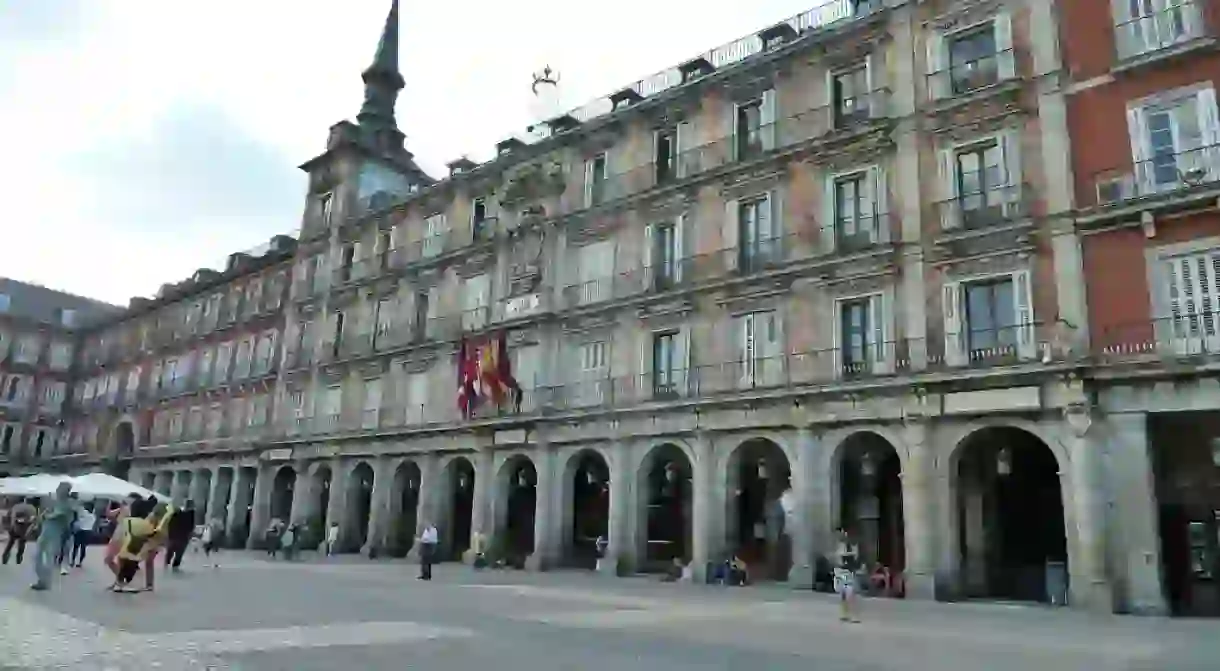A Brief History of the Plaza Mayor

Madrid’s Plaza Mayor is one of the most famous landmarks in Spain and has a rich history dating back several hundred years. It has witnessed countless major public events and suffered its own catastrophes. Read on to discover more.
The Plaza Mayor’s origins date back to the reign of Philip III, architect Juan de Herrera undertaking the original design, it was completed in 1619. Unfortunately, it then suffered several bouts of flaming bad luck. The first fire struck in 1631, and afterwards, the plaza was reconstructed by Juan Gómez de Mora. The second fire happened in 1670, the plaza was then reconstructed by Tomás Román. But as they say, bad things happen in threes, and another fire struck the plaza in 1790, the plaza we know and love today was then rebuilt by Juan de Villanueva (he took it from five to three floors, among other changes). The construction took years, and finally finished in 1854, even though Juan de Villanueva had passed away by this point, the process was completed by his students Antonio López Aguado and Custodio Moreno.

The Plaza Mayor wasn’t the original name. Its first name was the Plaza del Arraba, and the name was changed several times over the years to Plaza de la Constitución and Plaza de la República. At the end of the Spanish Civil War, it was finally given its current name: the Plaza Mayor.
Throughout the years, the Plaza Mayor has been used for a variety of different purposes. It was once used as a marketplace for food and other goods. It’s also been the site of many events like bullfights, public executions, trials during the Spanish Inquisition and crowning ceremonies.

Nowadays, you can find several pleasant (albeit overpriced) outdoor cafes and restaurants in the plaza, usually full of tourists. Many special events occur in the plaza now too – giant yoga workshops, concerts and festivals. One tradition has held steadfast: the annual Christmas markets, which have been held in the Plaza Mayor since 1860 and are still going strong.

The plaza today measures 129 meters in length and 94 meters in width. The buildings enclosed in the square are three floors high and there are 237 balconies facing the center. There are 10 ways to access the plaza, and additions to the plaza include the famous statue in the middle, which features Felipe III on his horse. This statue was placed in the plaza in 1848, although it was created in 1616. Before that, it had been located in Madrid’s largest park, the Casa de Campo.
Make sure to check out the famous Casa de la Panadería, which got its name from a bakery that was once located in the exact same spot. The building is covered in frescoes, which date back to 1590. Don’t expect to see the originals, though, as the frescoes have been reconstructed numerous times, most recently by Carlos Franco in 1992.













